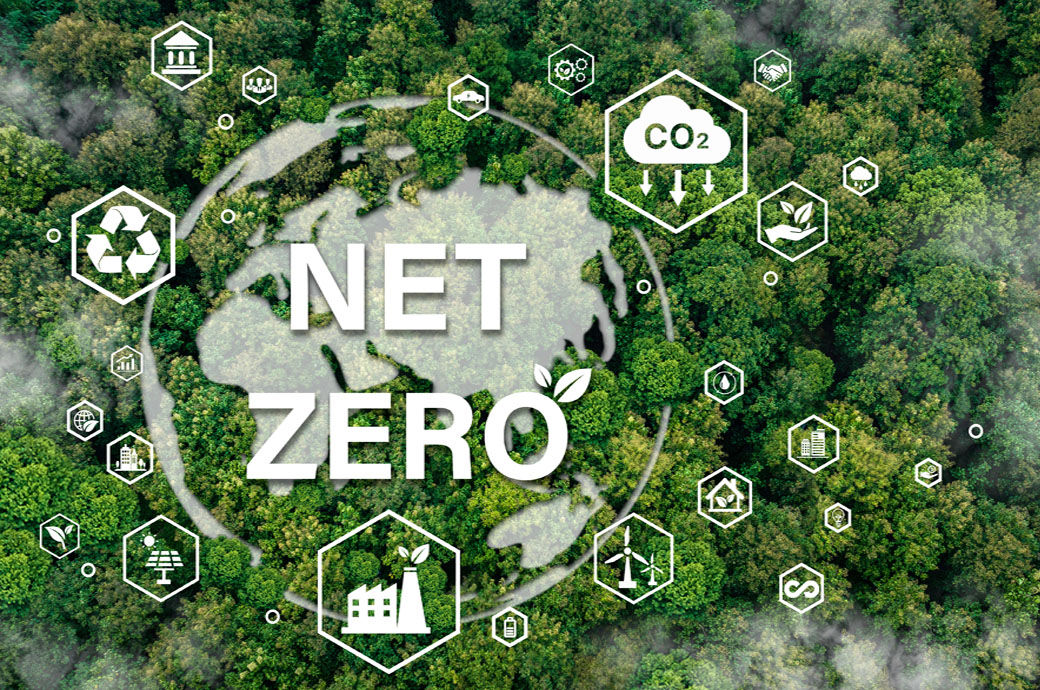
Among the first in the apparel sector, LS&Co.’s climate transition plan emphasizes its ongoing focus on three key areas to make meaningful progress:
1. Improving our operations: Reducing the scope 1 and scope 2 emissions will remain a central focus through actions including investments in energy efficient technology and renewable energy solutions, utilization of a Global Energy Management System to guide site decision making and energy procurement, partnerships with utility companies and landlords on decarbonization, and integrating climate change considerations into its partnerships and procurement process.
2. Working with our value chain: LS&Co. is committed to working with its hundreds of suppliers around the world to mitigate scope 3 emissions through Science Based Targets initiative (SBTi)-aligned climate targets for key suppliers, investment in sustainable materials and innovation, supplier financing options to facilitate investment in energy and emissions reductions, renewable energy, partnerships that accelerate circularity, sustainable cotton farming practices, and more.
3. Ensuring good governance and planning: LS&Co. is ensuring its climate transition plan is integrated across the entire business. The company is doing this by embedding climate risks and opportunities into its annual enterprise and relevant functions’ business plans, proactively seeking third-party expert feedback on the development and implementation of the plan, and continuing to use its influence and partnerships to advance policies that support the climate transition.
“For years, LS&Co. has been deeply engaged in fighting the climate crisis and sought to lead by example in tackling one of the most pressing and urgent issues of our time. Our climate transition plan embodies our commitment to doing our part, reaching our targets, and working with partners across our value chain to enable collective action to address climate change. These steps will not only move us toward our Net Zero climate ambition by 2050, but also strengthen our own business’s resilience to the effects of climate change,” said Jeffrey Hogue, LS&Co.’s chief sustainability officer.
Building on the company’s past progress, LS&Co.’s climate transition plan outlines the detailed steps the company will take, on its own and in collaboration with others, to meet its SBTi approved Net Zero ambition, as well as near-term goals, including:
1. 90% absolute scope 1 & 2 reduction in GHG emissions by 2025 from a 2016 base year.
2. 42% absolute scope 3 GHG emissions reduction from purchased goods and services for
3. apparel production emissions related to tops and bottoms by 2030 from a 2022 base year;
4. 100% renewable electricity in all company-operated facilities by 2025; and
5. 50% reduction in freshwater use in manufacturing in areas of high-water stress by 2025 (against a 2018 base year).
The plan is informed by and aligned with the latest and most ambitious climate science, as well as the Task Force on Climate-Related Financial Disclosure (TCFD), the CDP, and the We Mean Business Coalition reporting frameworks. It acknowledges the profound impact of climate change on biodiversity, ecosystems, and billions of people around the world and outlines a pathway to halt nature loss and support a just transition. In addition, LS&Co. engaged trusted advisors and solicited feedback from other leading non-government organizations (NGOs), research institutions, investors, and respected brands within and outside the industry.
“The climate crisis is only increasing in urgency, and we applaud companies like Levi Strauss & Co. for not only setting clear, ambitious targets aligned to the Paris Agreement, but for also publicly declaring how they’ll make meaningful progress,” said Eliot Metzger, director of sustainable business and innovation at World Resources Institute, who participated in the company’s transition plan stakeholder workshop. “In a time where companies may be tempted to stay quiet on sustainability efforts, it’s important to push for this level of transparency. A climate transition plan allows all stakeholders to understand how the company will work together with its value chain. I urge companies to focus on people, inside and outside the company, who will be critical partners in achieving the transition plan.”
"Climate change cannot be addressed by any single actor, and Ceres was proud to partner with Levi Strauss & Co. to facilitate a multi-stakeholder discussion on how to practically and holistically achieve the necessary emissions reduction across their value chain," said Tyler McCullough, Manager of Corporate Climate Action at Ceres. "Soliciting thoughtful feedback throughout the transition planning process is critical to building an achievable roadmap and we hope Levi's journey encourages companies in and outside the apparel sector to commit to the same level of transparency.
To maintain an accurate focus on climate risks and opportunities and to ensure alignment with prevailing and internationally accepted frameworks, the company intends to update its climate transition plan at least every three years. Additionally, LS&Co. will remain committed to public disclosure through regular sustainability reporting, outlining the company’s progress across three priority focus areas – climate, consumption, and community – in alignment with its organizational mission to deliver profits through principles to make an outsized impact on the world.
Fibre2Fashion News Desk (RM)